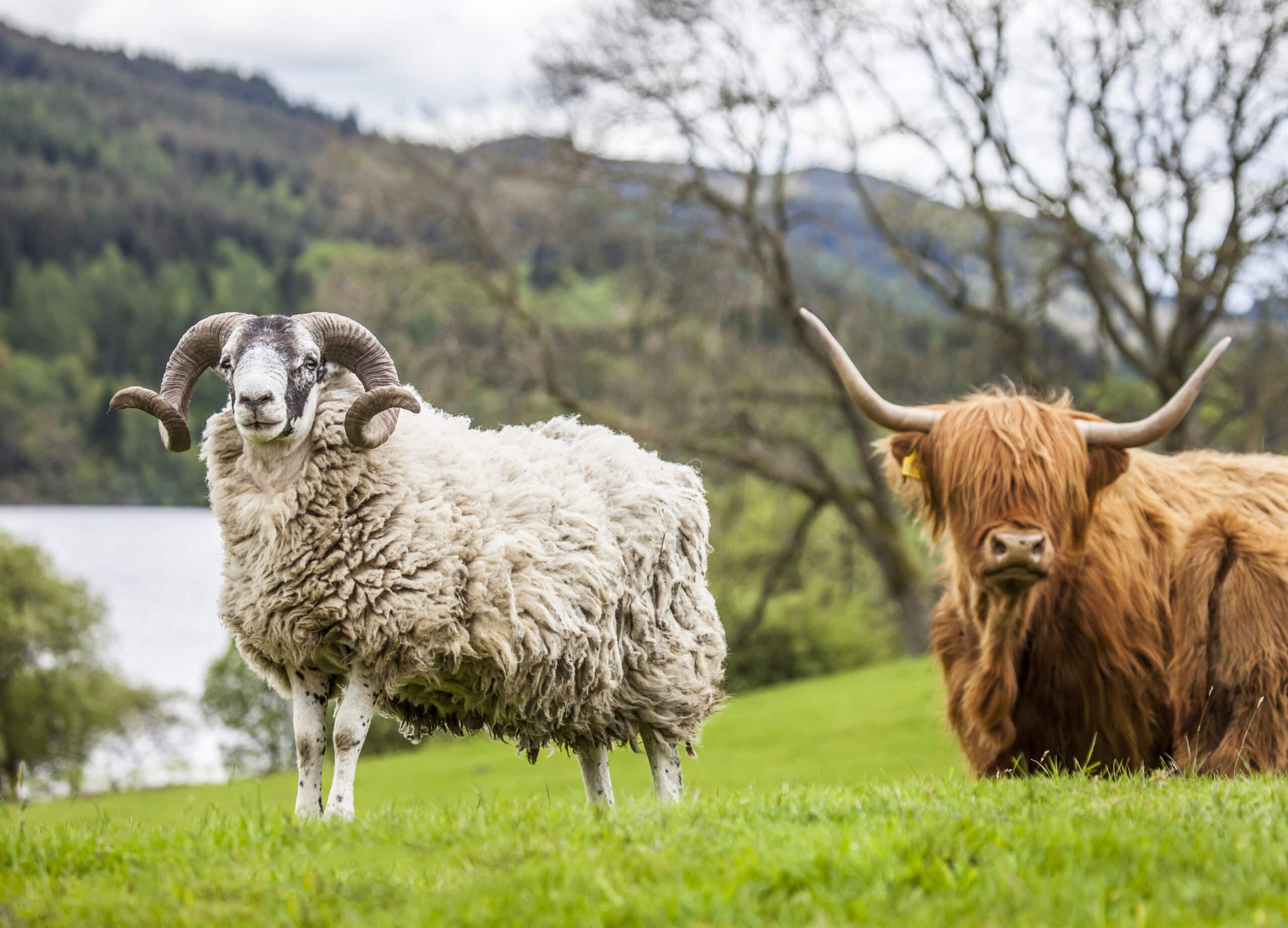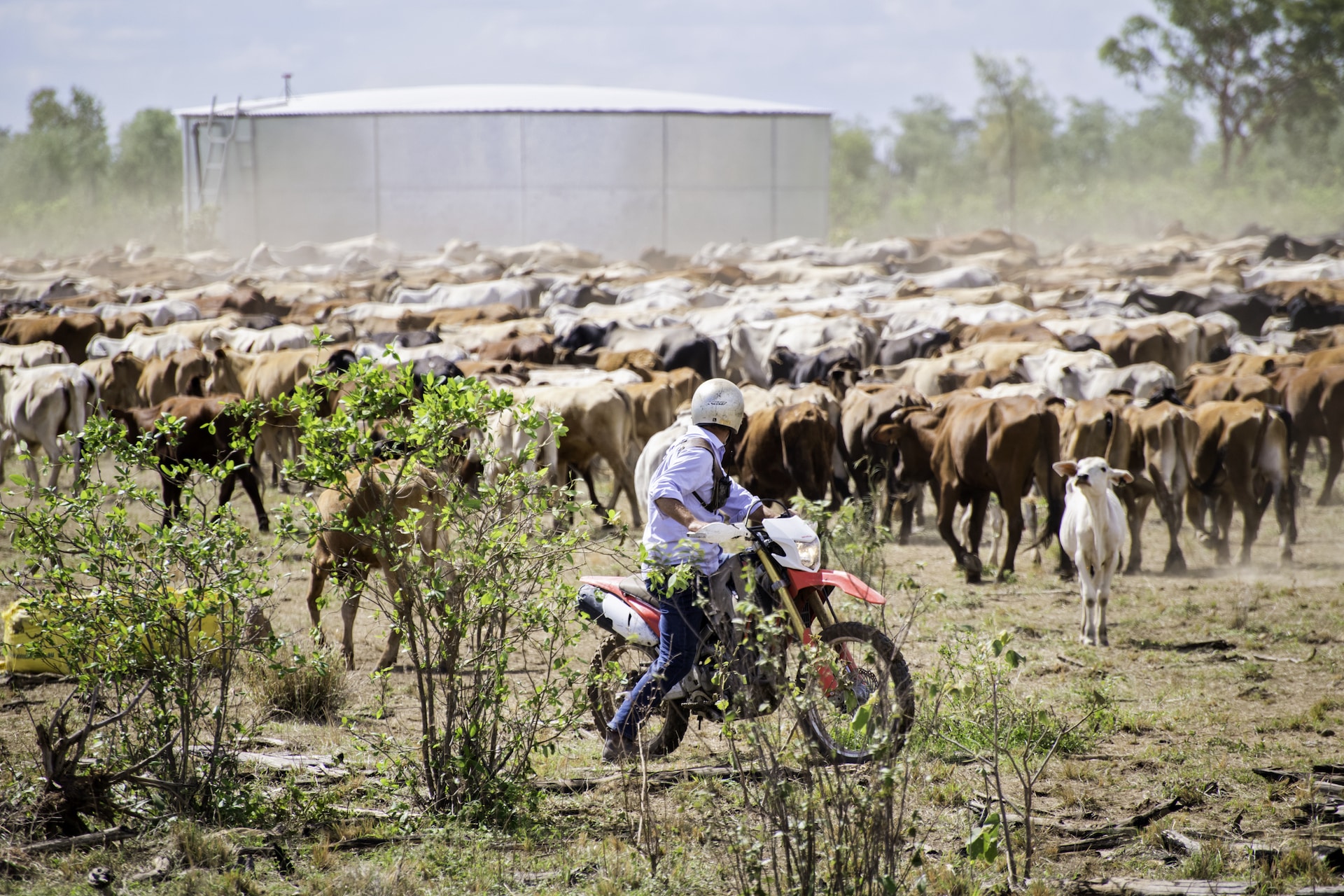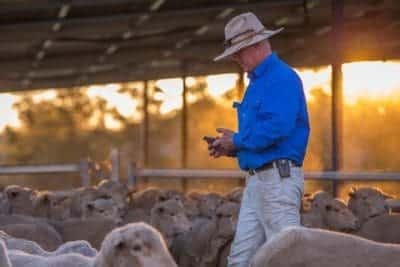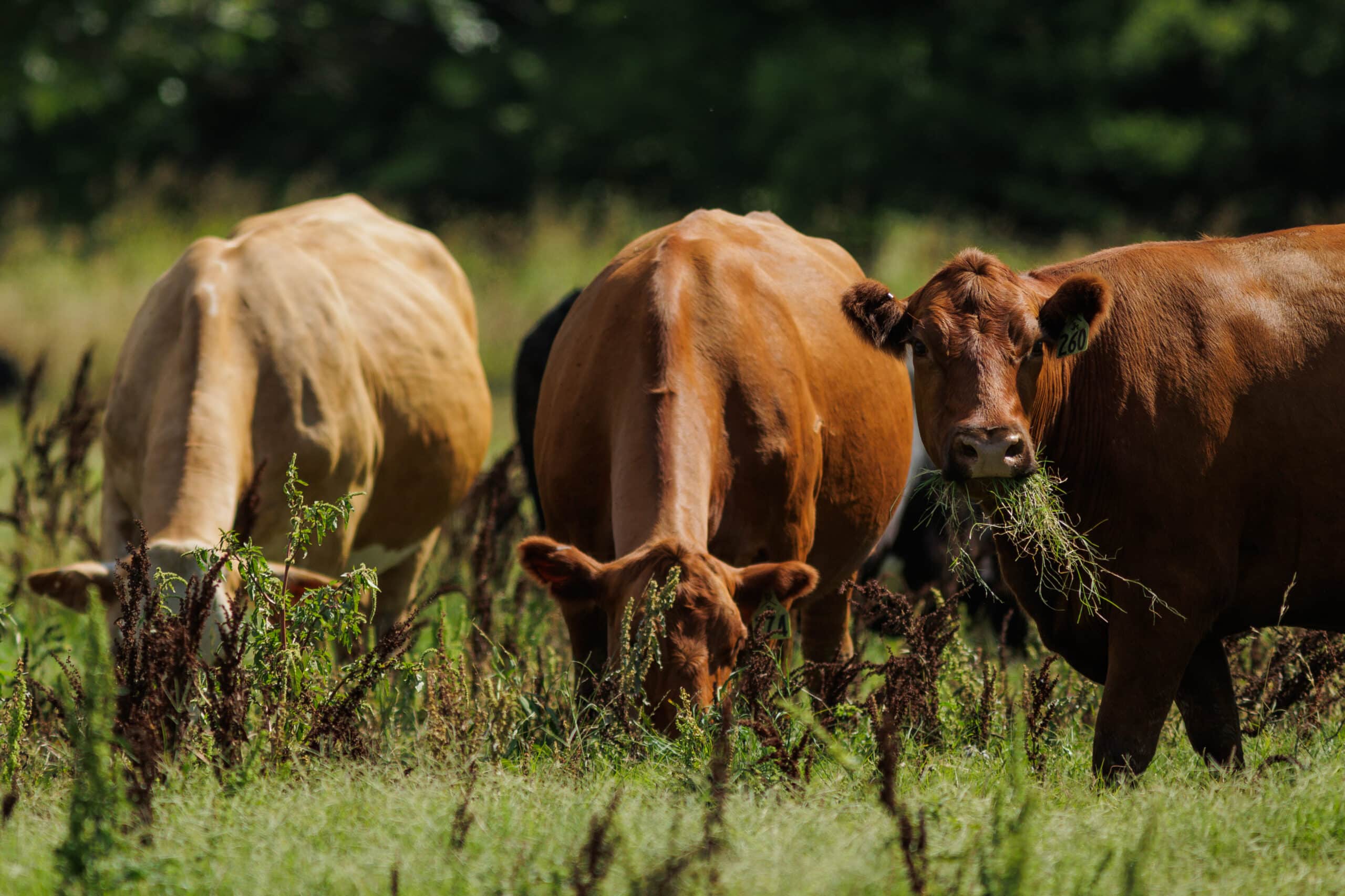Top five ways to decrease ruminant emissions

The message is loud and clear that livestock farmers need to reduce emissions from livestock operations. We look at the top way that you can work towards creating fewer emissions and generating a more profitable business in the meantime.
Where is the UK at the moment with emissions?
Quantities of GHG emissions are often converted to carbon dioxide equivalent (CO2 -eq). UK farming emissions total 45.6 million tonnes of CO2 -eq per year which is 1/10th of the UK’s total GHG emissions. The 3 main greenhouse gases produced in agriculture are nitrous dioxide, methane and carbon dioxide.
- Nitrous dioxide is influenced by soil and manure management as well as fertiliser use, application rates and methods.
- Methane is influenced by livestock management including feeding regimes and manure storage and use. UK beef farming produces 48kg CO2 -eq/kg of meat (half the global average). UK sheep farming produces between 11-18kg CO2 -eq/kg of liveweight.
- Carbon dioxide emissions are from fuel and electricity use, feed and fertiliser production, and soil cultivation.
Greenhouse gas production can be offset on the farm. Government incentives for environmentally friendly farming include the Sustainable Farming Incentive, Local Nature Recovery and Landscape Recovery schemes.
Importantly, methane produced by ruminants is energetically wasteful. The energy lost through methane production can equate to 55 annual grazing days lost for a mature ewe, 40 days for a lactating dairy cow and 60 days for a beef steer.
By decreasing ruminant emissions, not only can you improve the environment, but you can improve your outputs and, ultimately, your profits.
Here are our top 5 ways of decreasing ruminant emissions
1. Feed and nutrition
Lowering the forage to concentrate ratio reduces methane production and improves liveweight gains. In fact, trials suggest that fats and oils added to the diet can cut emissions. Typically, every 1% of added fat will reduce methane by 4% . These include linseed, sunflower and soybean oil.

However, a lot of these additives are not ready for farm use yet, could be expensive and may be impractical in grazing systems.
Instead, you could look at improving your forages. Higher digestibility forage and the inclusion of legumes such as white and red clover, lucerne, sainfoin, birdsfoot trefoil and sulla can decrease emissions. These nitrogen-fixing plants also reduce the need for nitrogen fertiliser, improve pasture and soil and lower your farm’s environmental impact.
2. Disease management
Cattle and sheep plagued by disease and injury are less productive. They eat and drink less and so microbial populations in their rumen can become unbalanced. These microbes, responsible for the production of methane, are susceptible to changes in diet, feed intake and antibiotic use.
Stressed animals (caused by disease and heat stress) are known to produce more methane as the microbial populations in the rumen shift. Consequently, cattle and sheep suffering from disease are less efficient and will produce more methane per unit of animal product.
So, by keeping on top of your animal welfare and ensuring housing and bedding is clean can go a long way to minimising disease occurrence.
3. Genetics
Methane emissions differ between individual ruminants. Scientists have found that methane producing microbes found in the rumen are partly controlled by host genetics. This suggests that we can selectively breed lower methane emitting livestock. Genetic variability accounts for a quarter of the methane produced.
In the UK, we have already improved the genetics of dairy cattle to maximise their efficiency and it is possible to do the same for methane emissions in ruminants. Although improving genetics can take generations, it is a permanent solution. Genetically selecting for enhanced productivity, optimal fertility, faster growth rates and reduced age to first calving are all ways to reduce the environmental impact of ruminants. Consider all these things when buying in new stock or searching for suitable sires for livestock.
4. Fertility
Genetic selection in the past has been devoted to producing high milk yielding cows. Unfortunately, this is led to lower fertility within the herd.
Each day that conception is delayed the cost is between £2.41 and £6.52. Poor fertility is expensive for farmers and the environment. In fact, replacement cows, brought in to maintain herd size, are responsible for 27% of a herd’s methane emissions.
Thus, improvements in dairy herd fertility could reduce methane emissions by between 10 and 25% (Garnsworthy, P. C. (2004). ‘The environmental cost of infertility in dairy herds’. Cattle Practice, 12, 47-49).
Improved fertility resulting from a shorter dry period indirectly leads to lower methane emissions. During the dry period, cows are typically fed more forage. If you decrease the time interval, cows will consume less forage. So, lower forage, higher concentrate diets are conducive to lower methane production.
5. Waste management
Ruminants excrete 75–95% of the nitrogen they ingest. The nitrification–denitrification of waste nitrogen produces nitrous oxide and the anaerobic decomposition of manure produces methane. Therefore, by regularly aerating manure heaps, you can reduce methane production and adding urease inhibitors can stop the conversion of urea to nitrous oxide.
Cattle grazing on pasture often ingest more protein (and nitrogen) than they need therefore breeding animals for improved nitrogen efficiency can reduce emissions.
Feeding forages with higher energy-to-protein ratios or different forages, such as high sugar perennial ryegrass results in less nitrogen excreted.
Large-scale farms can capture the methane produced and use it as biogas and then produce heat and power.
So how do you calculate how much greenhouse gas your farm is producing?
Firstly, find your farm’s carbon footprint by using online carbon calculators. Calculate your footprint with data such as livestock type, age and numbers. This will help you understand how much your farm is producing and highlights areas you can improve.
Three online calculators are:
1. AgreCalc
Other methods include a consultancy approach such as that offered by Alltech’s E-CO2 which requires a farm visit.
There is help available from companies such as rummi that help farmers manage their farms. ruumi, specifically, uses satellite-based insights to help optimise your rotational grazing thus increasing productivity and creating biodiversity. ruumi provides a free app and can help to certify land management and create carbon credits which could be an additional revenue stream.
How do you measure success?

Firstly, knowing how to calculate your farm’s emissions will help you to find out where you are, what you produce and where you can make improvements. Carbon calculators and companies like Ruumi, can help you achieve this.
Additionally, targetting feed and nutrition, disease, genetics, fertility and waste will improve your carbon footprint.
Ways of measuring success include: observing increased fertility rates, lower disease occurrence and receiving rewards in the form of carbon credits or government funding.
Find out more about how AgriWebb is supporting your sustainability goals

Genetic selection in the past has been devoted to producing high milk yielding cows. Unfortunately, this is led to lower fertility within the herd.
Each day that conception is delayed the cost is between £2.41 and £6.52. Poor fertility is expensive for farmers and the environment. In fact, replacement cows, brought in to maintain herd size, are responsible for 27% of a herd’s methane emissions.
Thus, improvements in dairy herd fertility could reduce methane emissions by between 10 and 25% (Garnsworthy, P. C. (2004). ‘The environmental cost of infertility in dairy herds’. Cattle Practice, 12, 47-49).
Improved fertility resulting from a shorter dry period indirectly leads to lower methane emissions. During the dry period, cows are typically fed more forage. If you decrease the time interval, cows will consume less forage. So, lower forage, higher concentrate diets are conducive to lower methane production.
5. Waste management
Ruminants excrete 75–95% of the nitrogen they ingest. The nitrification–denitrification of waste nitrogen produces nitrous oxide and the anaerobic decomposition of manure produces methane. Therefore, by regularly aerating manure heaps, you can reduce methane production and adding urease inhibitors can stop the conversion of urea to nitrous oxide.
Cattle grazing on pasture often ingest more protein (and nitrogen) than they need therefore breeding animals for improved nitrogen efficiency can reduce emissions.
Feeding forages with higher energy-to-protein ratios or different forages, such as high sugar perennial ryegrass results in less nitrogen excreted.
Large-scale farms can capture the methane produced and use it as biogas and then produce heat and power.
So how do you calculate how much greenhouse gas your farm is producing?
Firstly, find your farm’s carbon footprint by using online carbon calculators. Calculate your footprint with data such as livestock type, age and numbers. This will help you understand how much your farm is producing and highlights areas you can improve.
Three online calculators are:
1. AgreCalc
Other methods include a consultancy approach such as that offered by Alltech’s E-CO2 which requires a farm visit.
There is help available from companies such as rummi that help farmers manage their farms. ruumi, specifically, uses satellite-based insights to help optimise your rotational grazing thus increasing productivity and creating biodiversity. ruumi provides a free app and can help to certify land management and create carbon credits which could be an additional revenue stream.
How do you measure success?

Firstly, knowing how to calculate your farm’s emissions will help you to find out where you are, what you produce and where you can make improvements. Carbon calculators and companies like Ruumi, can help you achieve this.
Additionally, targetting feed and nutrition, disease, genetics, fertility and waste will improve your carbon footprint.
Ways of measuring success include: observing increased fertility rates, lower disease occurrence and receiving rewards in the form of carbon credits or government funding.
Find out more about how AgriWebb is supporting your sustainability goals



